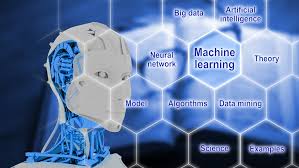Machine Learning and the Insurance Industry
Article Synopsis :
In this presentation, Professor John D. Kelleher of the Dublin Institute of Technology explains machine learning and its specific application to insurance.
In short, machine learning (ML) is about moving from data to insights to decisions. Data scientists (typically) use ML techniques to induce a prediction model from a training data set and then use the model to make predictions for new query instances. Insurance underwriting is a clear target for ML and a case study for car and life underwriting is presented.
In brief, predictive ML requires four things:
- A clearly defined target variable, i.e. what the model is trying to predict.
- The availability of a suitably rich data set, in which at least some predictive variables correlated with the target can be identified.
- A large number of observations upon which to build the model, allowing the abiding relationships to surface and be separated from random noise.
- An application by which model results are translated into business actions.
In the case of car insurance underwriting, for example:
- Target Variable: Claims over 6-month contract.
- Modelling Data: Underwriting requirements supplemented by third-party data.
- Frequency of Loss: Approximately 10% of drivers make claims annually.
- Business Action: Underwriting Decision.
And in the case of life insurance underwriting:
- Target Variable: Mortality experience over life of product (10,20+ years).
- Modelling Data: Underwriting requirements supplemented by third-party data.
- Frequency of Loss: Fewer than one first-year deaths per 1,000 new policies issued.
- Business Action: Underwriting Decision.
The presentation explains weighted sum and activation functions, neurons and neural networks, and how they add up to deep learning. Regarding the deployment of deep learning models specifically,
- They require a very large amount of data to train
- They’re most appropriate with high-dimensional data (e.g., video, image, text, time-series)
- They take a long time to train
- They make ‘Black box’ decisions, problematic with GDPR (Euro-zone data privacy requirements)
As for implementing ML in the insurance enterprise, Professor Kelleher issues four recommendations:
- Focus on clearly defined business problems.
- Simplify as much as possible; complex deep learning isn’t the only type of machine learning.
- The best models are the ones that fit into your existing processes.
- Build the human capacity to do data science.
Link to Full Article:: click here
Digital Insurer's Comments
Machine learning isn’t new. The basic techniques were pioneered in the 1980s. What was lacking were meaningfully large data sets and the massive compute power required to crunch them. With the explosion in sensor and device data and GPU-enabled super compute, we’re off to the races.In ML and neural networks, though the software isn’t trivial it’s far less important than 1) the quality of your data, and 2) the quality of your people. Ask yourself two questions:
- What is your strategy for acquiring new sources of data—both from within and without?
- What is your strategy for acquiring the talent to train and tune the data and algorithms?
Link to Source:: click here

























































Comments